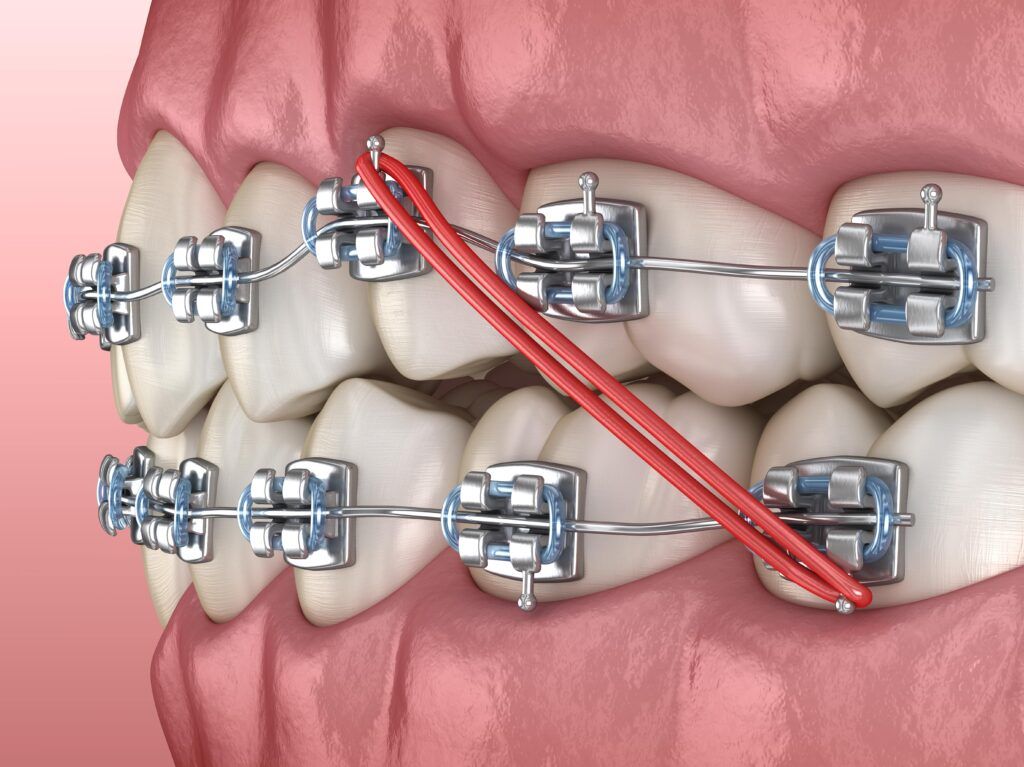How Cumming Orthodontics Can Transform Your Smile with Invisalign and Braces
How Cumming Orthodontics Can Transform Your Smile with Invisalign and Braces
Blog Article
Comprehensive Guide to Orthodontics Procedures for Dealing With Oral Misalignments
In the realm of orthodontics, the journey to accomplishing a completely aligned smile involves a myriad of treatments tailored to remedy dental imbalances. From typical dental braces to unseen aligners and also medical options, the field of orthodontics offers a series of remedies to address differing levels of dental abnormalities. Comprehending the complexities of each treatment, including their devices, benefits, and potential downsides, is important in making informed choices about one's orthodontic treatment. As we browse with the comprehensive overview to orthodontic treatments for remedying dental misalignments, the intricate information of each method will certainly unravel, clarifying the path toward a useful and unified dental alignment.
Orthodontic Procedures Introduction

Regular changes and tracking are essential components of orthodontic treatment to make sure development is on track and to make any type of necessary adjustments along the way. By undertaking orthodontic procedures, clients can not only attain a straighter smile yet likewise boost their general dental health and feature.
Conventional Dental Braces: Exactly How They Function
When thinking about orthodontic therapies for dental misalignments, standard dental braces stand out as a tried and true technique for remedying teeth placing. Conventional braces consist of braces, cables, and bands that function with each other to apply constant pressure on the teeth, slowly moving them into the preferred positioning. The braces are connected to the teeth utilizing an unique adhesive, and the cords are threaded with the brackets. By readjusting the stress of the cables, orthodontists can control the direction and pressure put on each tooth, directing them into correct alignment with time.
One trick aspect of just how standard braces job is the procedure of bone makeover. As stress is applied to the teeth via the dental braces, the bone surrounding the teeth is reshaped to sustain the new tooth placements. This remodeling is essential for the long-term security of the fixed placement. Individuals will certainly need normal changes at the orthodontist's workplace to make sure the braces proceed to apply the correct stress for effective teeth motion.
Unseen Aligners: Advantages And Disadvantages
Undetectable aligners provide a hassle-free and discreet alternative to conventional dental braces for fixing oral imbalances. These clear, customized trays are virtually invisible when put on, making them an appealing alternative for people looking for a more aesthetically pleasing orthodontic treatment. Among the primary advantages of unseen aligners is their removability, permitting easier upkeep of oral hygiene contrasted to typical dental braces. Patients can get rid of the aligners before eating or cleaning their teeth, lowering the risk of food getting stuck in the appliance and simplifying the cleansing process.

Surgical Orthodontic Options
Surgical interventions in orthodontics present sensible choices for resolving intricate dental misalignments that might not be properly solved through standard orthodontic treatments. While typical braces and invisible aligners can deal with several orthodontic problems, specific instances require medical treatment to achieve optimum outcomes. Surgical orthodontic alternatives are commonly advised for serious malocclusions, substantial jaw discrepancies, and cases where the underlying bone framework requires adjustment to accomplish correct alignment.
One typical medical orthodontic treatment is orthognathic surgery, which involves rearranging the jaws to correct functional problems such as problem eating or talking. This surgery is frequently executed in cooperation with an orthodontist that helps align the teeth before and after the procedure. Surgical orthodontics may additionally involve procedures to subject affected teeth, eliminate excess periodontal cells, or improve the jawbone to produce an extra unified face profile.
Before thinking about surgical orthodontic choices, clients go through a thorough assessment to identify the necessity and potential benefits of such interventions. aligners. While surgery may seem overwhelming, it can significantly boost both the feature and appearances of the smile in instances where traditional orthodontic treatments drop short
Retainers and Post-Treatment Care

Failure to conform with post-treatment care guidelines can result in relapse, where the teeth gradually relocate back towards their initial positions. Constant retainer wear, excellent oral health, and routine oral exams are important for keeping the results accomplished via orthodontic surgical procedure and guaranteeing the long-lasting stability of the remedied dental placement.
Conclusion
To conclude, orthodontic treatments offer numerous options for remedying dental imbalances. Traditional braces utilize steel braces and wires to shift teeth right into appropriate positioning. Unseen aligners offer a more discreet option yet might not appropriate for all instances. Surgical orthodontic choices are readily available for more severe misalignments. Retainers are frequently made use of post-treatment to keep the brand-new alignment. On the whole, orthodontic procedures can effectively improve oral health and aesthetic appearance.
As we browse via the comprehensive overview to orthodontic procedures for fixing dental misalignments, the intricate details of each approach will certainly unravel, losing light on the course toward a harmonious and useful oral placement. - orthodontist
One of the most common orthodontic therapies is the usage of pop over to this site dental braces, which are composed of metal brackets and cords that use gentle pressure to progressively change teeth into the desired position.When taking into consideration orthodontic therapies for dental imbalances, typical dental braces stand out as a reliable method for dealing with teeth placing. Additionally, unnoticeable aligners may not be suitable for complicated orthodontic problems that call for more significant teeth movement, as they are typically advised for moderate to modest situations. Retainers are customized orthodontic devices developed to hold teeth in their corrected settings after the conclusion of orthodontic treatment.
Report this page